Use your “freezer fish,” and avoid fishmonger sticker shock!
By Andy Lightbody and Kathy Mattoon
Photos by Kathy Mattoon
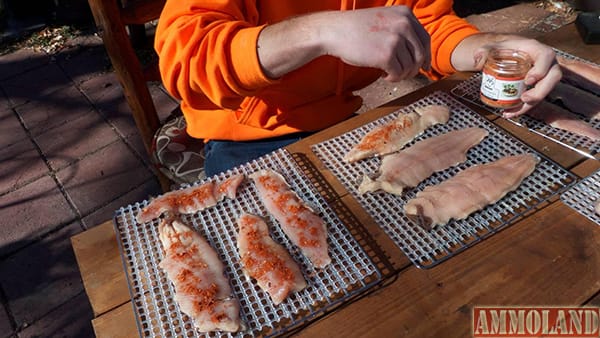

United States -(AmmoLand.com)- Depending on where you live, it seemed like a long and cold winter, where cleaning out the freezer of last season’s salmon and trout fillets just wasn’t in the cards.
Now that most of the “arctic blasts” are over, it’s time to start reliving some of last year’s great angling memories and making room for some of the fresh fish from springtime adventures that are just around the corner!
The big bonuses for doing some “refrig-rummaging” is that not only are you going to win a few points from your significant-other and cleaning out the freezer, but you’re going to turn out some mouth-watering smoked fish and likely discover new neighbors and friends that you never knew you had before.
Many of us live in areas where smoked salmon and trout are not something you can find at the local grocery store, or even a fresh fish mart. For many, it’s a treat and delicacy that can be only found by ordering on the Internet, and often times with less than delicious results. Do a quick computer net search and it is not uncommon to see smoked salmon selling for $26-$40 a pound, and rainbow trout at $60 a pound. Add in shipping and questionable eating quality, and I have very few friends that I want to spend that kind of $$$$ on!
Instead, of suffering from credit-card-sticker-shock, it is drop dead easy to make it yourself for literally a few pennies on the dollar.
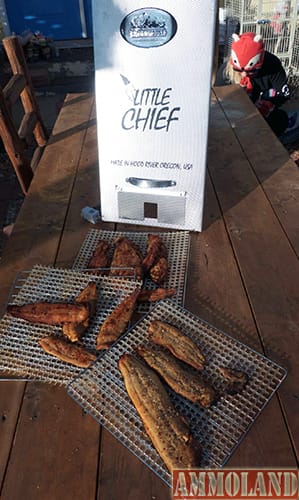
Begin by defrosting your trout or salmon fillets. Ten pounds of fillets are going to smoke, dry and end up producing about 3-4 pounds of smoked fish when finished. If you want to take the fillets and turn them into jerky instead of moist fish bites, all you do is follow this same recipe and just increase the drying time until the fillets have about 90 percent of the moisture reduced. Ten pounds of fish fillets will turn into around 1 pound of jerky.

In order to keep everything as simple as possible and easy to prepare, our top choice for the brining process is the Smokehouse Trout & Salmon Brine Mix (www.smokehouseproducts.com). It’s a prepackaged, premixed combination of salt, sugar and flavorful spices that mix up with 2-quarts of water and can be used for up to about 15-pounds of fillets.
If your fillets are more than ¾ of an inch in thickness, use a sharp knife and do some simple cross-cuts laterally on the flesh-side of the fish. This increases the surface area of the fillet and allows it to better absorb the brine and spices.
Once mixed, fish and brine are put in a glass bowl or small plastic bucket and allowed to marinate for 8-12 hours. Even 24+ hours of brining won’t hurt a thing, and we often throw the bucket in the refrigerator and let it soak overnight. The real chemistry behind brining is actually pretty simple. All fish, poultry and meats already contain salt water. By immersing and soaking them in a liquid with a higher concentration of salt, the brine is absorbed into the meat. Whatever spices and flavors that are in that brine are absorbed as well.
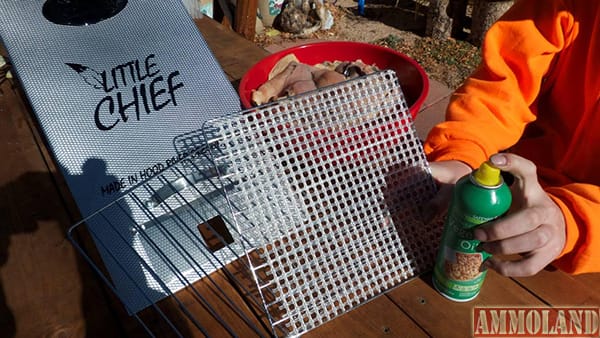
Spray all your smoker racks with a non-stick spray to keep the fillets from sticking!
After marinating, gently rinse the fillets and lay them out on your smoker rack to air dry for approximately 1-hour. As always, spraying the racks, even the supposedly “non-stick” types, with a non-stick spray or wiping the surfaces with vegetable oil will keep the fillets from sticking while smoking and drying.
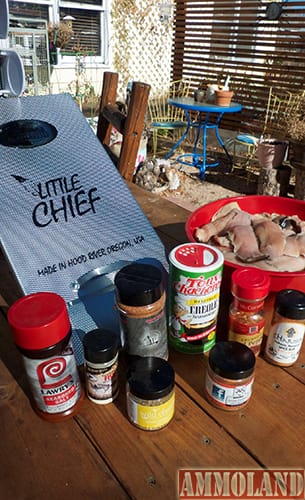
Smokers are as much a personal choice and preference as trying to suggest what make/model of car is your favorite. For home-use, ease and affordability, there is little question as to why the Smokehouse Big Chief or Little Chief electric smokers (www.smokehouseproducts.com) reign supreme. They’ve been around since 1968, are easy to operate, provide constant temperatures and turn out “great eats.”
Virtually everyone we know began their smoking-careers with one of these!
Regardless of your smoker choice, the idea behind all smoked fish is to dry/dehydrate and add flavor, without turning it into a high-temp oven. Low, slow and with temperatures of 165 degrees F to no more than 200 degrees F is the key to success.
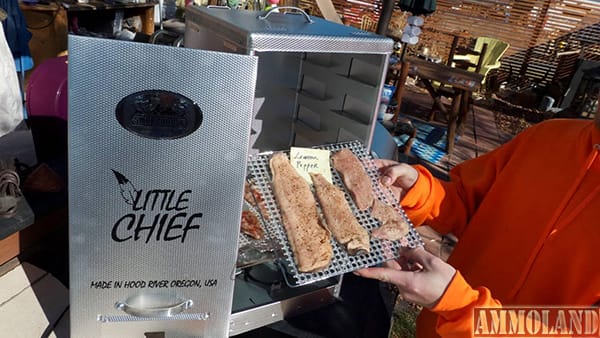
With the fillets on the racks, you’re ready to add your personal touch and “flavor profiles.” Once brined, some folks like to just use the flavor from the wood smoke. Others want to go with Cajun, Lemon/Pepper, Chili, Mexican, Teriyaki, Dill, Rice Vinegar, and Hoisin or seasoned-salt options. Here is where you are limited only by your imagination!
Into the smoker, and our favorite wood flavor is Alder, because it is a light wood and delicate. For a sweeter touch, try apple chunks or chips. If you want to go bolder, try cherry, mesquite or even hickory.
WARNING: As with all smoking of fish or game, too much and it becomes overpowering and equates to eating a charcoal-briquette offering.

Our best results are from using 3-4 pans of wood chips (one immediately after the other) in total. Each pan of chips will burn/smolder/smoke for approximately 45 minutes, so you are actually smoking the fillets for about 3 hours, and they should start to turn a light golden brown as the smoking process continues.
After the smoke, simply use the heat from your smoker to finish the fish, which can vary greatly, depending upon outside temperature, wind conditions and even air humidity. Based on those outside weather conditions, your smoked fillets will be ready in anywhere from 3 ½-8 hours. At this point, the fillets can be brushed with additional Teriyaki, honey, Hoisin, soy sauce, etc. Just keep checking them periodically and dry them till they are done to your taste and texture.
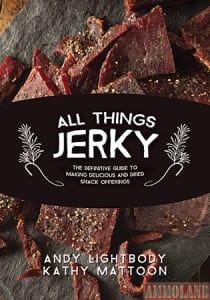
Once smoked and prepared to taste, remove the fillets from the racks to prevent sticking and let them final cool/ air dry for an hour. This however is the most difficult part of the entire process, for you’ll be guaranteed that the temptation to taste, sample or simply eat will be virtually overwhelming. If there are any left to save for later, zip-lock bags and into the refrigerator will let them last up to a week or more. Put into vacuum sealed bags and placed into the freezer, they will last for many months and simply need to be defrosted when ready to eat.
Our rule of thumb is… if you think you made enough, you probably will soon discover that you should have doubled the recipe. Bon appétit!
About the Authors:
Andy Lightbody and Kathy Mattoon are the authors of ALL THINGS JERKY—The Definitive Guide to Making Delicious Jerky and Dried Snack Offerings, with over 100 recipes for making great eats from wild game, poultry, fish and much more. The book is available on Amazon at www.Amazon.com.
